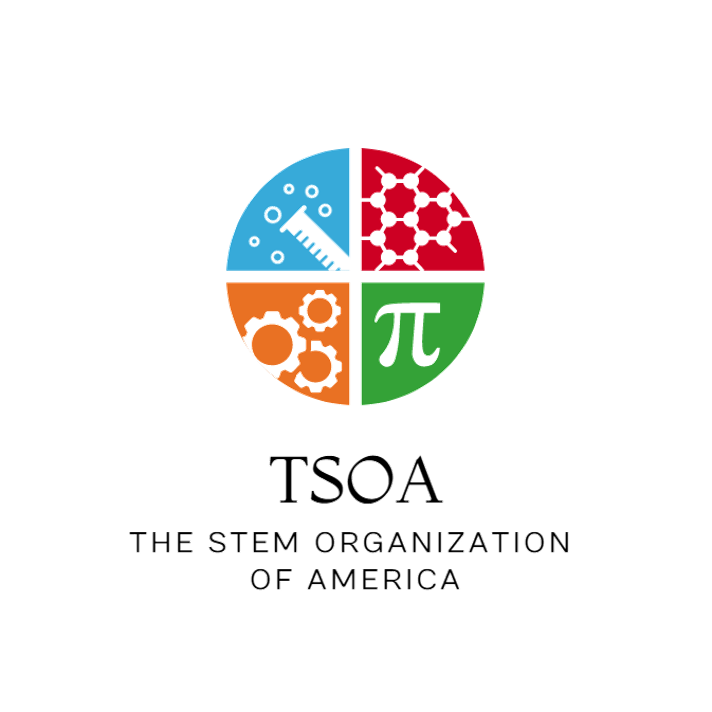The National At-Home STEM Competition
Important information Fall of 2020
Despite the COVID-19 pandemic, our organization offers a way for students across America to showcase their interest in STEM through The National At-Home STEM Competition. In this competition, we want to give our participants the freedom of choice to do a project in the field of STEM they are most interested in. Contestants will follow the guidelines listed below, and once their projects are submitted, judges from Harvard, Yale, Stanford, and many other top universities will choose a winner.
Sign Up Here!
We offer various prizes in our competition and $400 total! Finally, a quick reminder: you may only complete one project maximum in the field of STEM you are most interested in. All projects are due on December 7th at 11:59 pm EST. We look forward to seeing you compete!
This is our full Terms and Conditions.
If you have any further questions, please contact us via email.
Winners for the fall/winter National At-Home STEM Competition
1st Place in Science for The National At-Home STEM Competition: “Development of an Aptamer-Gold Nanoparticle Assay for Field Use in Informing “DIY-HRT” by Arthur Liang
1st Place in Technology for The National At-Home STEM Competition: “CatarACTION” by Sruti Peddi
1st Place in Engineering for The National At-Home STEM Competition: “Creating a Novel, Ultra-Low-Cost Brain-Controlled Prosthetic Arm” by Ben Choi
1st Place in Mathematics for The National At-Home STEM Competition: “Measuring the Effectiveness of Delaware’s Commitment to Increasing Healthy Vegetation in Protected Areas” by Priya Gupta
Most Applicable Project Award (MAP Award): “COVID Shelter Design” by Leah Rimland and Brianna Schulstad
Most Creative STEM Project Award: “The Effect of Baking Powder and Baking Soda on Cookies” by Elisabeth and Madeline Shin
Mythbuster Award: “The Effect of Plant Type of a Green Roof on Internal Building Temperature” by Harriet Shapiro
Out of the Box Award: “Origami Knots” by Nhi Dao
Bill Nye Award: “Integrated Stool Stand for Guitar” by Myles Lahue
STEM in Health: “Experimental Study of Lead Content in Water” by Hari Murali
Thank you to all the students that competed, all the judges that participated, and to our sponsor Delaware 4-H!
Competition Rubrics and additional information

Science
In the Science Project, contestants must create a lab/experiment and lab report detailing a problem or something they attempted to find/discover. They must use the scientific process to create a professional lab. The criteria and detailed point breakdown for the Science Project can be seen below on this page.This project will be submitted by contestants taking pictures of their lab report, or through the means of submitting it online as a PDF. For the actual lab/experiment, a video may be taken and submitted, or a picture of the lab/experiment may be taken. The method the contestant chooses to submit will not impact how it is judged. The contestant only has to choose one method to submit, but can choose more if they want to. Click the following link for more information.

technology
In the Technology Project, contestants must choose a problem that they would like to solve. Then, they will create a solution to that problem through the use of programming. Additionally, a device can be used/created that must be programmed in order to solve the problem (e.g., Arduino). They may use any programming language they desire. The criteria and detailed point breakdown for Technology project can be seen below on this page. The student will be required to show the actual program running through the means of pictures or video. They can do the same for submitting the code, and can submit the abstract as a PDF, picture, or video. The method the contestant chooses to submit will not impact how it is judged. The contestant only has to choose one method to submit, but can choose more if they want to. Click the following link for more information.
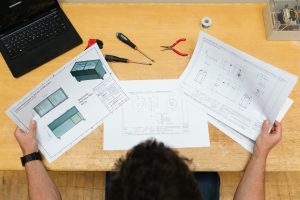
Engineering
In the Engineering Project, contestants must design and build something that solves a problem they come up with. The criteria and detailed point breakdown for the Engineering project can be seen below on this page. The student will be required to show what they have built through the means of picture or video. They can do the same for submitting their design. Their abstract, brainstorm, reflection, and conclusion can also be submitted the same way, but they also have the option of submitting those as a PDF document. The method the contestant chooses to submit will not impact how it is judged. The contestant only has to choose one method to submit, but can choose more if they want to. Click the following link for more information and the rubric
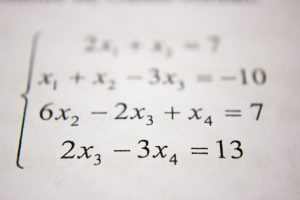
Mathematics
In the Mathematics Project, contestants can choose between a statistics/applied math project, or a pure math project. The statistics/applied math project requires contestants to research a problem/theory/trend of their choice, and make use of analytical skills, numbers, statistical methods, and/or other mathematical models to present a solution to the student’s chosen research topic. The pure math project should involve solving an abstract problem with no real applications, or using proofs to prove something the contestant wishes to prove. The criteria and detailed point breakdown for the Mathematics project can be seen below on this page. The contestant has the option to submit their report through a video, a picture, or a PDF document. The method the contestant chooses to submit will not impact how it is judged. The contestant only has to choose one method to submit, but can choose more if they want to. Click the following link for more information.
COMPETITION Awards
1st Place in Science for The National At-Home STEM Competition
-
- Prizes: $100, Personalized Certificate of Achievement
1st Place in Technology for The National At-Home STEM Competition
-
- Prizes: $100, Personalized Certificate of Achievement
1st Place in Engineering for The National At-Home STEM Competition
-
- Prizes: $100, Personalized Certificate of Achievement
1st Place in Mathematics for The National At-Home STEM Competition
-
- Prizes: $100, Personalized Certificate of Achievement
Most Applicable Project Award (MAP Award)
-
- Personalized Certificate of Achievement, and recognition
- This award recipient demonstrates a thorough understanding of how their project may be applied to real world situations throughout their project, including their experiments and responses.
Most Creative STEM Project Award
-
- Personalized Certificate of Achievement, and recognition
- This award recipient has shown outstanding creativity in their project. This contestant though at home, was able to formulate a unique solution to a difficult problem.
Mythbuster Award
-
- Personalized Certificate of Achievement, and recognition
- This project busts a commonly conceived notion as a “myth”.
STEM in Health
-
- Personalized Certificate of Achievement, and recognition
- This project is the most applicable project to the health/medical field. It has the potential to help people all around the world.
Out of the Box Award:
-
- Personalized Certificate of Achievement, and recognition
- This project stands out as the weirdest project.
Bill Nye Award:
-
- Personalized Certificate of Achievement, and recognition
- This project explains a complex topic in a simple way.
How prizes are sent: The prizes are sent through PayPal, though an alternative payment process can be utilized, if necessary.
How Winners are announced: Winners will be announced on this website. They will also be sent a congratulatory email along with a personalized certificate, prize money, and a receipt of payment for the Top 3.
Certificates: Participation Certificates will be emailed to all other competitors in the National At-Home STEM Competition
Sign Up below for a chance to win these awards:
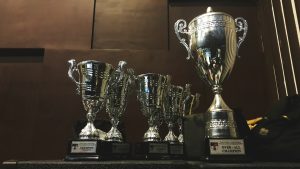
To do list before submitting your project:
-
-
- Go through the rubric for the STEM topic you’ve chosen.
- Collect all files you plan to submit and ensure they are in the file formats listed in the rubric.
- Submit all of the files to our email, contact@tsoaonline.org, if the file is less than 25 MB. If the file is greater than 25 MB, share it with our email account via Google Drive.
- At the top of your email include your Name, Title of your Project, and Topic within STEM your project is based upon (i.e., science, technology, engineering, or mathematics). If you share your project via Google Drive, email us with the information listed previously, and let us know that you shared it via Google Drive.
-
If you have any questions, please feel free to email us at contact@tsoaonline.org
The Judging Process
Judging will be done by student organizations at different universities in correspondence to the topic of the project. Currently, all projects will be judged by students of the Harvard Women in Computer Science, Stanford Undergraduate Research Association, Rutgers Engineering Honors Academy, Yale Scientific Magazine, Harvard Computer Society, and Physics Undergraduate Women And Gender Minorities at Stanford (however, we are certainly open to other organizations helping to judge these project categories).
We, along with the judges, cannot wait to see your projects!
Meet a few of our winners from the Spring/Summer 2020 Competition!

Elana Agarwal
1st Place in the Spring/Summer 2020 Competition.
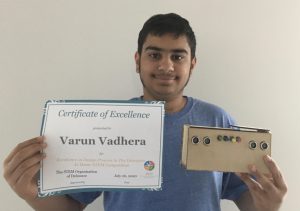
Varun Vadhera
Winner of the Excellence in Design Process (now the MAP Award) in the Spring/Summer 2020 competition.
